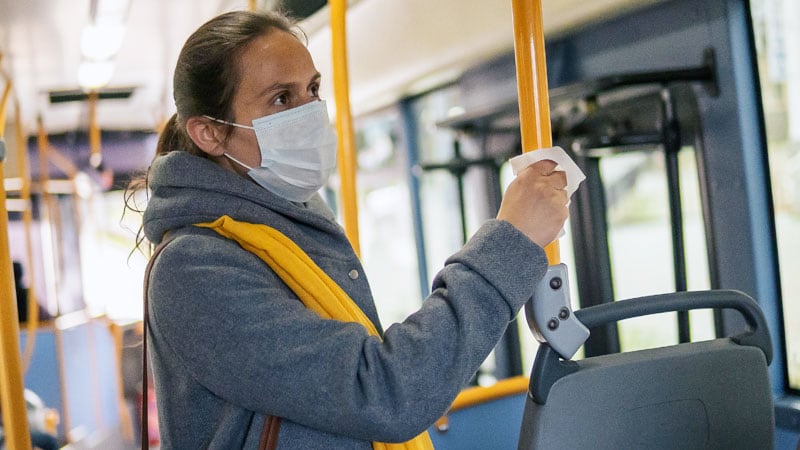
Editor’s note: Discover the most recent COVID-19 news and assistance in Medscape’s Coronavirus Resource Center
.
Clients with heart disease (CVD) who had even worse composite ratings for 6 social factors of health– financial stability, area quality, education, 30- day food security, neighborhood combination, and medical insurance– were less most likely to stick to all the procedures advised to decrease their threat of contracting and dispersing COVID-19, according to a brand-new research study.
Compared to individuals who are least disadvantaged, less of the most disadvantaged people followed all the suggested COVID-19 threat mitigation steps for individual defense (76%vs 89%) or social distancing (42%vs 59%), or might work from home/postpone work (26%vs 41%).
These research study findings, based upon survey responds from more than 2000 grownups with self-reported CVD, consisting of cardiovascular disease, myocardial infarction (MI), or stroke, were released online Might 6 in Blood Circulation: Cardiovascular Quality and Results, and provided Might 15 at the American College of Cardiology (ACC) 2021 Scientific Session.
The outcomes recommend that “if you were of a particular group where such health messaging from researchers and other professionals was invited and was relied on,” individuals were most likely to practice the COVID-19 mitigation steps where possible, Kobina K. Hagan, MD, Miles Per Hour, informed theheart.org|Medscape Cardiology in an interview following a press instruction about the research study.

Dr Kobina K. Hagan
Even if they relied on the heath messages, disadvantaged individuals had problems sticking to advised danger mitigation practices due to the fact that of monetary factors: if they had a hard time to have adequate cash to purchase food, did not have actually paid ill days, or might not practice social distancing at their task or while taking a trip in public transportation.
The present research study findings “contribute to the growing proof that socially disadvantaged populations deal with several barriers to healthy living, consisting of restricted capability to take part in COVID-19 danger mitigation methods,” the scientists sum up.
The study was performed in the United States in between April and June 2020 when vaccines were not readily available, however the findings offer insight into present vaccine hesitancy in disadvantaged people, Hagan, a postdoctoral fellow from the Center for Outcomes Research Study, Houston Methodist Research Study Institute, Texas, mentioned.
COVID-19 has actually magnified preexisting health injustices, and it reveals that “health systems need to be much better established to incorporate the health-related social requirements of clients with their medical care,” he prompted.
” Our research study supplements the call to determine and focus on for vaccination and culturally proficient health messaging, socially susceptible populations whose restriction in sticking to the mitigation determines perpetuates the variations in COVID-19,” the group concludes.
Comparable Variations in a Disadvantaged Latinx Population
.
Welcomed to comment, Lilia Cervantes, MD, concurred that, as in a current research study that she led– based upon interviews with 60 Latinx grownups residing in low-income locations of San Francisco, California, and Denver, Colorado, who made it through a COVID-19 hospitalization– the present research study demonstrates how COVID-19 amplified preexisting health variations.
In both research studies, misconception of health details combined with financial stress and anxiety were crucial findings, kept in mind Cervantes, an associate teacher in the Department of Medication at Denver Health Medical Center in Colorado.
In the research study of disadvantaged Latinx COVID-19 survivors, numerous people “revealed their desire to minimize the spread of COVID-19 in their neighborhoods through advocacy,” she kept in mind. “They explained connecting to their good friends, next-door neighbors, relative about their experience with COVID-19 as a method to alert individuals to utilize a mask and get immunized.”
According to Cervantes, this research study revealed that “neighborhood is necessary, particularly in the Latinx neighborhood, and as clinicians, we can develop trust and lower false information by getting in touch with neighborhood and appealing neighborhood leaders.”
Comparable to Hagan and associates, her group recommends: “To face COVID-19 as a compounder of social drawback, public health authorities need to alleviate COVID-19– associated false information, migration worries, and difficulties to healthcare gain access to, in addition to develop policies that supply work security and address financial downsides.”
Greater Morbidity, Death
.
People with CVD have a greater rate of morbidity and death from COVID-19, that makes it more vital for them to take actions to decrease their threat for infection, Hagan and associates keep in mind.
They assumed that socioeconomically disadvantaged grownups with CVD might have a more difficult time following suggested COVID-19 threat mitigation practices.
They evaluated information from 25,269 U.S. grownups in 10 states and 8 cities who responded to the COVID-19 Family Effect Study performed by the National Viewpoint Research Study Center at the University of Chicago from April to June 2020.
Of these, 7%(2036 people) had self-reported CVD.
The scientists organized individuals with CVD into quartiles based upon their disadvantaged quartile and 35%were the in the most disadvantaged quartile.
Less of those in the least disadvantaged quartile than in the most disadvantaged quartile were age 60 years or older (51%vs 73%), however more were female (59%vs 30%), Black (18%vs 3.5%), or Hispanic (21%vs 6.6%).
More individuals in the most disadvantaged quartile than in the least disadvantaged quartile did not have a high school diploma (24%vs 0%), had a family earnings listed below $50,000 in 2019 (93%vs 3.7%), had often or frequently lack food throughout the previous 30 days (56%vs 0%), or had 3 or more comorbidities (64%vs 39%).
Compared to people with the least social misfortune, those with the best social misfortune were 17%less most likely to follow all the individual protective steps: using a face mask, washing/sanitizing hands, and keeping a 6-foot range from those outside their home (frequency ratio [PR], 0.83; P =.009), after representing distinctions in group attributes and comorbidities.
In addition, compared to people with the most beneficial social threat profile, those with the least beneficial profile were 31%less most likely to follow all the suggested social distancing procedures: cancelling or holding off group activities, preventing congested public locations and dining establishments, and preventing contact with high-risk individuals (PR, 0.69; P =.018). They were likewise 47%less most likely to work from house or cancel/postpone work (PR, 0.53; P =.002).
The research study did not get any financing. Hagan has no appropriate monetary disclosures. The disclosures of the other authors are noted with the short article. Cervantes has no pertinent monetary disclosures
American College of Cardiology (ACC) 2021 Yearly Scientific Session. Provided May 15, 2021.
Circ Cardiovasc Qual Outcomes. Released online May 6,2021 Abstract
.
For more from theheart.org|Medscape Cardiology, join us on Twitter and Facebook

No comments:
Post a Comment